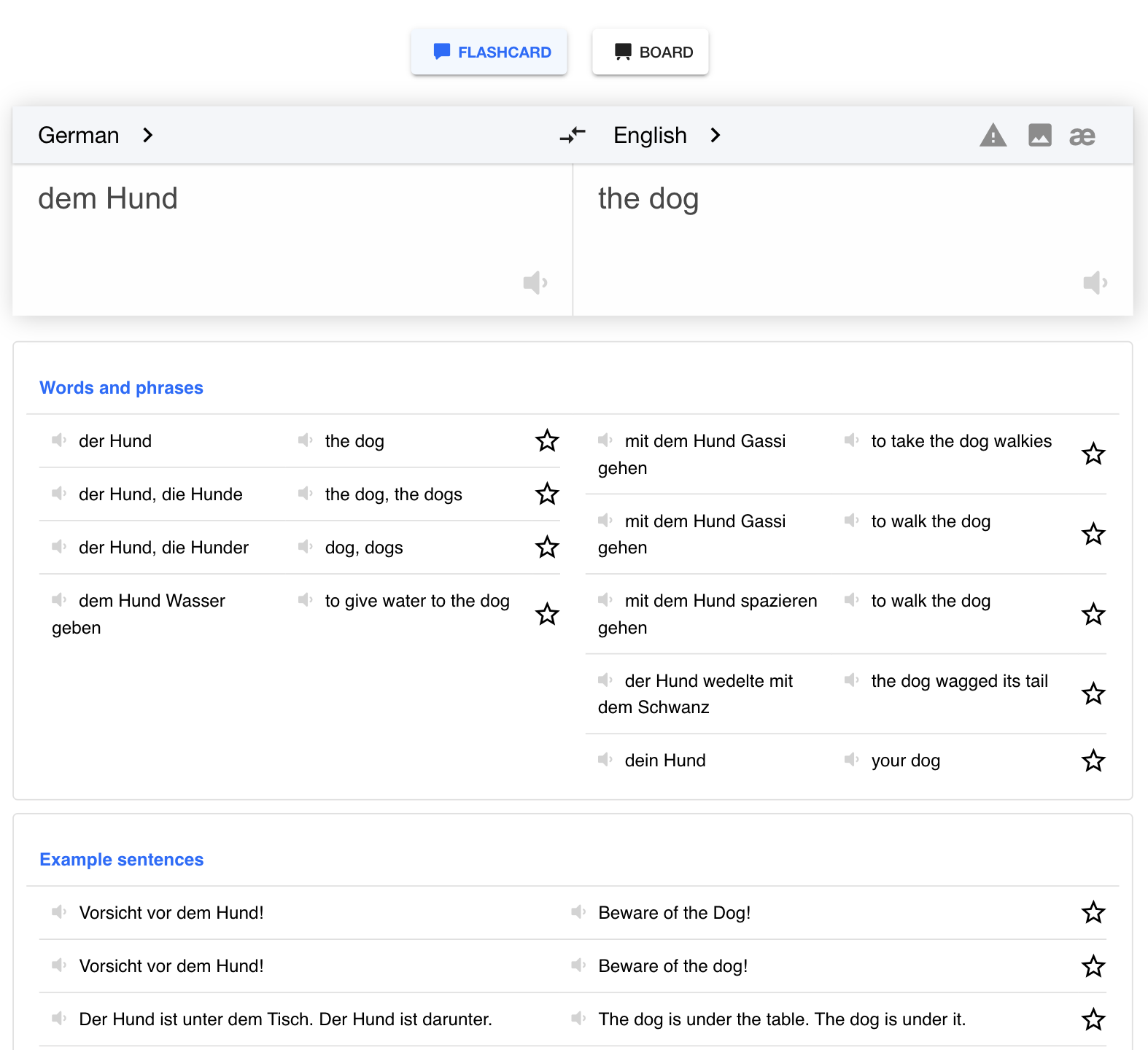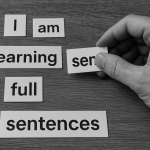Searching for the best language learning app to master German in 2025 is no small feat. With dozens of platforms promising quick results, fluency, or gamified fun, it’s hard to know which app actually delivers — especially when it comes to a complex language like German.
This article compares six well-known language learning apps — Taalhammer, Duolingo, Glossika, LingQ, Busuu, and Rosetta Stone — through one critical lens: how effectively do they teach you to speak, think, and understand German fluently?
If you’re an adult learner serious about German — not just dabbling in vocabulary but aiming to communicate confidently — this is your guide.
- What Makes a Language Learning App Truly Great for German?
- Taalhammer: Fluent German Through Full Sentences and Smart Repetition
- Duolingo: Fun, Addictive — But Doesn’t Get You Speaking German
- Glossika: Audio Immersion Without Personalization
- Rosetta Stone: Immersive, But Not Output-Oriented
- LingQ: Rich in Native Input, Poor in Output
- Busuu: Structured, Practical, But Lacking Flexibility
- Final Verdict: The Best Language Learning App for German in 2025
- FAQ: Choosing the Right Language Learning App for German
What Makes a Language Learning App Truly Great for German?
Before diving into comparisons, it’s worth clarifying what makes a language learning app actually effective for German:
- Full-sentence fluency, not isolated words
- Adaptive spaced repetition, not fixed review schedules
- Output-based practice (speaking/writing), not passive recognition
- Grammar in real use, not just grammar tips or fill-in-the-blanks
- Personalization, especially for German’s gendered nouns, cases, and syntax
Taalhammer, as you’ll see, builds on these pillars — while many others offer pieces of the puzzle, but not the full picture.
Taalhammer: Fluent German Through Full Sentences and Smart Repetition
Taalhammer is a language learning app designed for learners who want to speak and think in full German sentences, not just recognize vocabulary or swipe through games. The platform is built around active recall, sentence construction, and self-evaluation — a method that not only teaches you the language, but helps you develop awareness of your own fluency.
How Taalhammer Works (And Why It’s Effective for German)
Each learning item in Taalhammer is a complete, high-frequency German sentence spoken by a native speaker. You listen, read, repeat — then you’re challenged to recall it from memory. Here’s what that might look like:
You hear:
| German | English |
|---|---|
| Ich hätte gerne einen Kaffee, bitte. | I’d like a coffee, please. |
You’re then prompted:
“Translate this idea into German.”
You type or say the sentence from memory — then compare your version to the model. You mark yourself: correct, close, or incorrect.
This isn’t about perfection. It’s about building fluency through feedback loops that involve your own brain, not just the app’s grading. In fact, this self-evaluation method activates deeper cognitive processing, which is essential for building long-term, flexible fluency.
Taalhammer tracks your performance and adapts when you’ll see the sentence again using true spaced repetition. Struggle with a specific phrase like “dem Hund”? The system will surface variations like:
| German | English |
|---|---|
| Ich gebe dem Hund Wasser. | I give the dog water. |
| Er hilft dem Mann. | He helps the man. |
Over time, the dative case stops being a confusing rule and becomes something you just know.

Taalhammer uses one of the most sophisticated adaptive spaced repetition systems available, built to reflect how human memory actually works.
Learn What You Need
Taalhammer doesn’t trap you in a generic curriculum. You can:
- Add your own phrases
- Choose specific sentence packs (e.g. travel, business, dating)
- Focus on tricky grammar or personal situations
That means you’re always learning something relevant and immediately useful, not grinding through generic dialogues about penguins wearing hats.
In short, Taalhammer doesn’t hand-hold or entertain — it trains you to become independent, fluent, and confident in German through high-effort, high-reward learning.
Looking for full control over what you learn? See which language learning app lets you create your own content — and why it matters.
Duolingo: Fun, Addictive — But Doesn’t Get You Speaking German
Duolingo is arguably the most recognizable language learning app in the world — and for good reason. It’s colorful, free, and gamified to keep you coming back. For many users, it’s an entertaining way to dip their toes into a new language. But when it comes to actually speaking German, its limitations quickly surface.
How Duolingo Teaches German
Duolingo’s German course is organized into “skills” on a path, each filled with mini-exercises: matching words to pictures, reordering jumbled sentences, and choosing the correct translation. You’ll occasionally speak or type a sentence, but most interaction is recognition-based, not recall-based.
Here’s a typical progression:
- Tap the English word that matches der Apfel
- Choose the correct order of “Ich esse einen Apfel”
- Match “bread” to das Brot
While this builds some vocabulary and basic pattern awareness, it doesn’t train you to produce German independently. Most learners can follow along and “complete” lessons without forming a single original sentence.
And yes, you’ll get exposed to some grammar concepts — often passively — but there’s no real structure to how grammar builds or gets reinforced. And because the language learning app is designed to reward progress through repetition and badges, it encourages completion, not fluency.
Speaking and Listening in Duolingo
Duolingo includes speech exercises, but they’re optional and limited. If enabled, you might repeat “Ich bin ein Mann” into your phone. The system will accept or reject it — but there’s no real conversation flow, no corrective feedback, and no way to explore what you said wrong.
Listening content is mostly synthetic or isolated, with little connection to how people actually speak German in real life.
Taalhammer vs Duolingo – Habit Builder or Fluency Builder?
Taalhammer and Duolingo approach language learning from completely different philosophies.
- Duolingo builds habits. It keeps you engaged through gamification and low-effort micro tasks. You’ll maintain a streak, learn common nouns, and maybe feel more familiar with German over time.
- Taalhammer builds fluency. You’re asked to recall and evaluate full sentences. You’re trained to recognize grammar through usage. You don’t just tap “Brot” — you say “Ich esse gern frisches Brot mit Butter” and remember it later.
For casual users, Duolingo is a fun way to get started. But for learners who want to speak German, build real memory, and understand sentence structure, Taalhammer offers a depth Duolingo simply doesn’t aim for.
Want a deeper look at how the two compare? Check out our full Taalhammer vs Duolingo comparison to see which is right for your goals.
Glossika: Audio Immersion Without Personalization
Glossika is a language learning app known for its unique, almost old-school approach to language learning: audio-based sentence repetition. It skips the flashy UI and grammar explanations, opting instead for what it calls “mass sentence exposure.” You hear full sentences, repeat them, and move on.
For German learners, this can feel immersive — but also mechanical.
How Glossika Teaches German
Glossika presents you with German sentences spoken by native speakers. For each one, you can:
- Listen
- Read the English translation
- Type what you heard
- Repeat it aloud
The app emphasizes brute-force input. It’s based on the idea that if you hear…
| German | English |
|---|---|
| Ich habe heute viel zu tun. | I have a lot to do today. |
…enough times, you’ll eventually internalize it.
But there’s a catch: you don’t get to modify or build these sentences. You’re repeating fixed content — no creation, no personalization, no feedback on how you’re doing. It’s great for pattern recognition, but limited for developing productive fluency.
There’s also minimal grammatical guidance. You won’t get help with word order, case endings, or prepositions. The theory is that you’ll absorb these through repetition, but in practice, that often leads to confusion or slow progress — especially with complex German grammar.
Review System and Adaptivity
Glossika does include a review system based on frequency and prior performance, but it’s not truly adaptive. It won’t notice, for example, that you consistently struggle with dative constructions or reflexive verbs — it just loops sentences back through spaced repetition at fixed intervals.
There’s no fine-grained memory tracking, and no AI adjusting the timing based on your actual recall.
Taalhammer vs Glossika – Who Wins at Sentence-Based Learning?
On the surface, Taalhammer and Glossika both rely on full-sentence learning. But only one asks you to engage with those sentences actively.
- Glossika = Passive repetition. You listen, repeat, and hope for absorption.
- Taalhammer = Active recall and self-evaluation. You type, speak, and track your understanding.
Taalhammer lets you create your own content, tailor reviews based on what’s hard for you, and reinforce grammar through usage. Glossika, in contrast, is one-size-fits-all. The sentences may be authentic, but the experience isn’t yours.
If you’re an auditory learner and enjoy repeating phrases without context, Glossika has value. But if you want to speak German fluently, understand why sentences work, and retain them long-term — Taalhammer gives you far more control, insight, and progress.
Rosetta Stone: Immersive, But Not Output-Oriented
Rosetta Stone has long been synonymous with language learning software. Its “no-translation” method promises natural language acquisition through contextual immersion — matching pictures with spoken sentences, without any English.
For beginners, this can feel intuitive. But when learning German — with its complex case system, flexible word order, and subtle grammar shifts — Rosetta Stone’s rigid format can quickly become limiting.
How Rosetta Stone Teaches German
Each lesson is a sequence of visual cues matched with spoken German. For example:
- You see a photo of a man drinking coffee.
- You hear: “Der Mann trinkt Kaffee.”
- You click the matching image.
This approach simulates how children acquire their first language — through repetition and context, without explanation. This language learning app avoids translations, grammar tips, or sentence breakdowns.
That may work for basic vocabulary and concrete concepts (das Auto, die Frau), but it struggles with abstract grammar. For example:
- You’ll see “Ich sehe den Hund” and “Ich gebe dem Hund Wasser”, but the accusative vs dative shift is never explained — it’s up to you to infer the rule through trial and error.
There’s also no way to customize content, add your own phrases, or skip ahead to relevant scenarios. Rosetta Stone forces you to follow its path, regardless of your pace or goals.
Speaking Practice and Feedback
Rosetta Stone includes a speech recognition tool (TruAccent), which lets you repeat sentences aloud. It scores your pronunciation, but only at the word or phrase level. There’s no free speaking, no grammar correction, and no way to test whether you could build a sentence like “Ich möchte mit dir ins Kino gehen” from scratch.
You’re always repeating. Never creating.
Taalhammer vs Rosetta Stone – Immersion or Interaction?
Both apps expose you to real German. But only one challenges you to use it.
- Rosetta Stone: Visual immersion. No translations, no grammar, no sentence building.
- Taalhammer: Full-sentence fluency. You recall, speak, type, evaluate — and adapt based on your progress.
Rosetta Stone may help you recognize sentences like “Die Kinder spielen im Garten”, but Taalhammer ensures you can say that, and dozens of variations, confidently and from memory.
If you’re serious about speaking German, not just understanding it passively, Taalhammer offers the interaction, feedback, and mental engagement that Rosetta Stone lacks.
LingQ: Rich in Native Input, Poor in Output
LingQ is built for language learners who love to read and listen to authentic content. Whether it’s German news articles, podcasts, or short stories, LingQ lets you learn by immersing yourself in native-level material. But while it’s a great tool for passive input, it leaves a major gap when it comes to speaking and sentence production.
How LingQ Teaches German
LingQ works like a personal reading lab. You select from a library of German content — or upload your own — and read along while listening to native-speaker audio. Every time you come across a new word, you can “LingQ” it (i.e., save it), and the system will track how often you see and remember that word.
The experience is immersive, but mostly passive:
- You read “Ich habe keine Ahnung” in an article.
- You highlight “Ahnung” and save it.
- The language learning app tracks whether you’ve seen it 1, 3, or 10 times.
- It might suggest reviews later, but not in sentence recall context.
There’s no speaking practice, no sentence building, and no grammar explanation. The app assumes you’ll absorb structure and syntax through exposure. That can work — but only if you already have a strong foundation and a clear sense of how German works.
Strengths and Weaknesses for German Learners
LingQ excels at helping you understand German — especially how it’s written and spoken in natural, unfiltered contexts. You can read native content from day one, even as a beginner.
But the platform doesn’t prompt you to recall full sentences, use grammar actively, or practice speaking. You’re never asked to say “Ich hätte das früher machen sollen” from memory — only to recognize it when it appears again.
Taalhammer vs LingQ – Input-Only vs Full Fluency Loop
LingQ and Taalhammer both value authentic input, but only one closes the loop with output.
- LingQ: Massive content access, rich input, zero speaking or recall training.
- Taalhammer: Learner-tailored sentences, adaptive review, active recall, and speaking practice.
In LingQ, you see and save words like “verstehen” or “versuchen”. In Taalhammer, you train sentences like:
| German | English |
|---|---|
| Ich versuche, jeden Tag Deutsch zu lernen. | I try to learn German every day. |
| Ich verstehe das nicht. Kannst du das bitte wiederholen? | I don’t understand that. Can you please repeat that? |
That difference — between passive exposure and active fluency — is what makes Taalhammer more effective if your goal is not just to read German, but to speak and think in it.
Busuu: Structured, Practical, But Lacking Flexibility
Busuu positions itself as a curriculum-based language learning app, offering structured German courses aligned with CEFR levels (A1 to B2+). It combines vocabulary, grammar explanations, and real-world dialogues in a clean, professional interface. For learners who prefer order and academic progression, Busuu can be a reassuring choice — but it has its limits.
How Busuu Teaches German
The app breaks German down into bite-sized lessons, each focused on a theme (e.g., introductions, directions, shopping). Each lesson includes:
- Vocabulary drills with visuals and audio
- Fill-in-the-blank grammar exercises
- Short dialogues and comprehension checks
- Optional writing and speaking tasks
Busuu’s standout feature is the ability to submit your writing or speaking to native speakers in the community for feedback — a genuinely helpful addition for learners trying to practice output. However, this process is asynchronous and doesn’t replace real-time or consistent speaking practice.
You’ll also find grammar explanations, but these are optional sidebars, not deeply integrated into usage. You’re told how German cases work, but rarely required to use them in spontaneous recall.
Progression and Personalization
Busuu’s German course is linear. You can test into a level, but the learning path itself is fixed. You move through lessons whether they’re relevant to your needs or not. You can’t add your own content or restructure the curriculum.
Review is powered by a “Smart Review” system — a type of spaced repetition based on when you last saw a word and how well you did. It works decently for vocabulary but lacks adaptive depth at the sentence or grammar level.
Taalhammer vs Busuu – Structured Path vs Personalized Fluency
Busuu and Taalhammer both support output, but in very different ways:
- Busuu: You complete scripted writing and speaking tasks. You might say “Ich möchte einen Apfel” and wait for corrections. The structure is clear, but the flexibility is limited.
- Taalhammer: You actively recall full sentences, adapt them, and track your own fluency. You say or type “Ich hätte gerne einen großen Apfel, weil ich Hunger habe” — and repeat it until it sticks.
Busuu offers grammar in theory. Taalhammer makes you use it until it becomes instinct.
If you prefer a neat, classroom-style path, Busuu works well. But if your goal is personalized, adaptive fluency that reflects your interests and memory — Taalhammer takes the lead.
For more on how Busuu stacks up for Germanic languages in general, here’s a full breakdown of which language learning app, Taalhammer or Busuu, is better for learning germanic languages.
Final Verdict: The Best Language Learning App for German in 2025
If your goal is to casually explore the German language, any of these apps can get you started. Duolingo helps form a daily habit. LingQ offers authentic content. Busuu provides structure. Glossika, Rosetta Stone — they all have their niche.
But if your goal is to speak German fluently, to form real sentences, and to retain what you learn, then Taalhammer is the clear winner.
It’s the only language learning app that combines:
- Active recall with self-evaluation
- Adaptive spaced repetition based on your memory
- Full-sentence training from day one
- Speaking and writing tasks grounded in your personal goals
- Flexible content with real grammar, not gamified guesses
For serious learners in 2025, Taalhammer isn’t just a language learning app. It’s a fluency engine.
I’ve also ranked apps that actually help you become fluent — and the results might surprise you.
FAQ: Choosing the Right Language Learning App for German
What’s the best language learning app to become fluent in German?
If fluency means being able to speak, think, and recall German in real situations, Taalhammer offers the most complete system — combining adaptive memory training, sentence recall, and speaking-focused practice.
Is Duolingo good for learning German?
Duolingo is great for beginners and habit-building, but it lacks depth in grammar and speaking. It won’t get you fluent, but it can help you get started.
Do I need grammar explanations to learn German?
Not necessarily. Apps like Taalhammer integrate grammar through real sentence usage, so you learn how German works by seeing it in action — not by memorizing rules.
Which language learning app helps me remember German the longest?
Taalhammer uses a true adaptive spaced repetition system based on your personal performance — which makes retention stronger and review more efficient than in fixed-timer apps.








